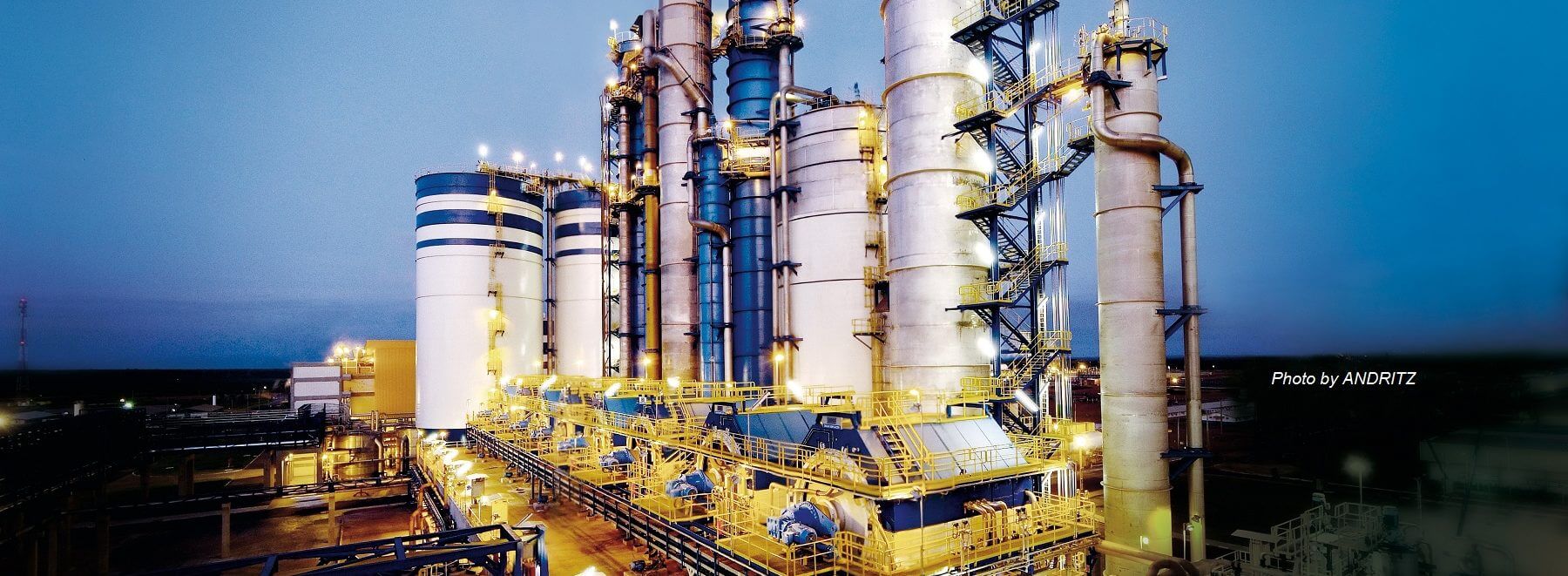White liquor preparation
White liquor preparation is the last part of the recovery process - it is called the causticizing process. Here the sodium carbonate of the green liquor is converted into sodium hydroxide (NaOH) by reduction with burnt lime (CaO).
At the same time, lime mud (calcium carbonate CaCO3) is formed. This is separated and washed in a lime mud washer, the filtrate being the weak liquor. We now have new cooking liquor which is called white liquor (although it is in fact slightly yellow). The washed lime mud is burnt in a lime kiln at high temperature to produce burnt lime once again.
The lime kiln is sometimes fuelled with oil but more often with wood residues. These residues are first dried and then pulverized or degasified before being fed into the kiln. The lime kiln is a large, horizontal steel cylinder with a diameter of 2-4 meters and a length of 40-120 meters. The cylinder rotates at 1-3 revolutions per minute with a slope of 2-30 towards the burner.
Some of the most difficult applications for valves are found in the white liquor plant. The green liquor is very erosive and has a strong tendency to crystallize and create “build up” on all wetted surfaces of a valve. Another difficult and very erosive application is the lime mud control.
Examples of NAF valves used in this process
- NAF Duball DL full bore ball valve – Unclarified green liquor, clarified green liquor, white liquor, lime sludge, formic acid, methanol, fuel oil to kiln, natural gas to kiln, firefighting water
- NAF Duball DL Ceramic Valve, lined control ball valve – Lime mud control
- NAF Setball V-port ball sector valve – Cooling water, chemically treated warm water, LP steam control, methanol, fuel oil to kiln
- NAF Trunnball DL full bore ball valve – LP steam control
- NAF Turnex pneumatic actuator- For all control and on/off service on NAF rotary valve




